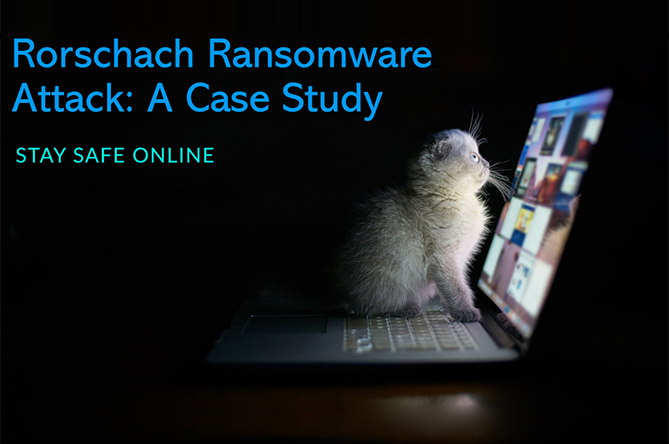Rorschach Ransomware Attack: A Case Study
Rorschach ransomware is a stealthy, highly sophisticated strain of ransomware discovered in early 2023. It stands out for its speed, encryption techniques, and the ability to avoid detection by most antivirus solutions.
In a real-world case study involving a U.S based financial company, Rorschach attackers exploited a misconfigured security system to infiltrate the company’s network, encrypt critical data, and demand ransom. The attack was unique due to its multi-threaded encryption capabilities, encrypting data significantly faster than traditional ransomware variants.
Attack Timeline:
- Initial Access: Attackers leveraged a vulnerable remote desktop protocol (RDP) server to gain access to the network.
- Payload Delivery: Once inside, the attackers dropped the Rorschach ransomware payload, which used direct system API calls to evade detection.
- Execution: The ransomware immediately began encrypting files, with its speed surpassing many existing ransomware strains. It also utilized a custom ransom note.
- Data Exfiltration: Although the attackers encrypted the data, they did not exfiltrate it, indicating a focus purely on ransom rather than a double-extortion tactic.
Characteristics of the Rorschach Attack:
- Fast Encryption: Rorschach is one of the fastest encryptors, utilizing hybrid encryption techniques combining both RSA-2048 and ChaCha20, making decryption extremely difficult.
- Polymorphic Code: The ransomware changes its appearance on each execution, evading traditional detection mechanisms.
- Low Footprint: Rorschach has a low digital footprint, minimizing detection by antivirus programs.
Response:
The affected company, noticing unusual encryption patterns, quickly isolated the infected machines. Incident response teams were deployed to assess the damage, decrypt critical files through backup restoration, and identify the attack vectors.
Lessons Learned:
- Patch Management: The initial breach occurred due to an outdated security patch. Ensuring all systems are updated is crucial.
- Endpoint Security: Advanced endpoint detection and response (EDR) tools should be implemented to detect stealthy malware.
- Backup Strategy: Regular, secure backups played a pivotal role in the company’s recovery without needing to pay the ransom.
Conclusion:
Rorschach ransomware illustrates the evolving nature of ransomware attacks. With its high encryption speed and sophisticated evasion techniques, it’s critical for organizations to stay ahead by employing advanced cybersecurity measures, regular patching, and robust disaster recovery plans.















